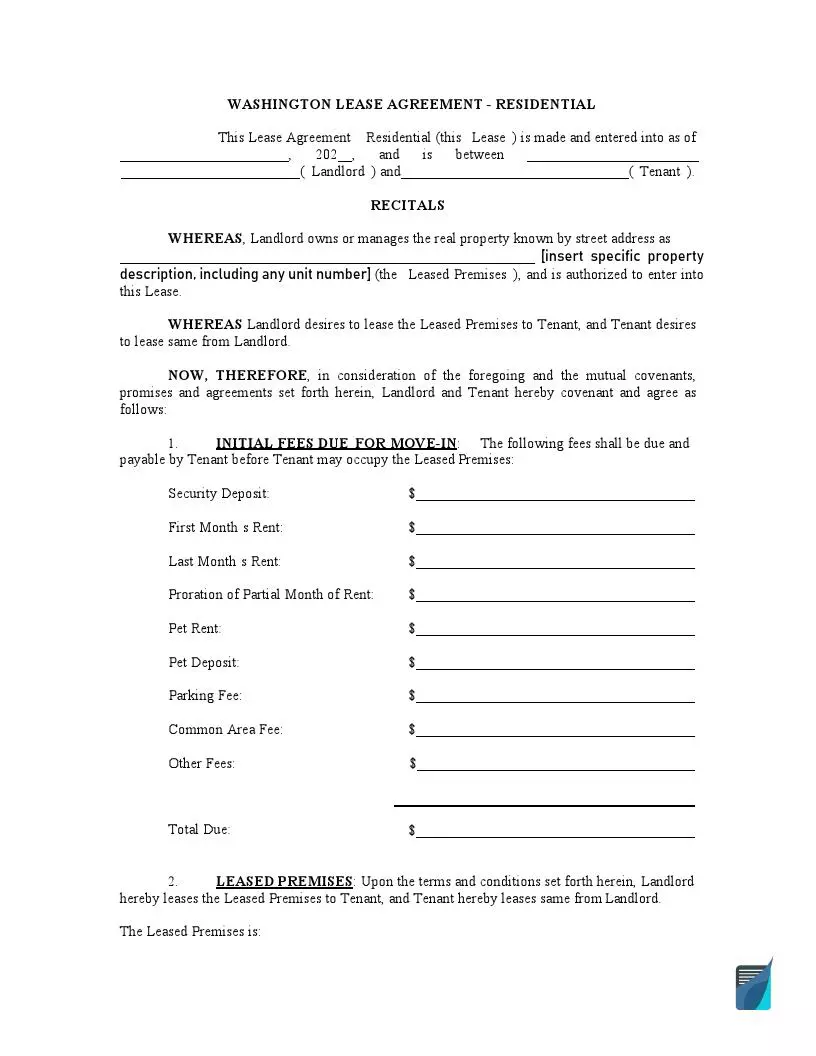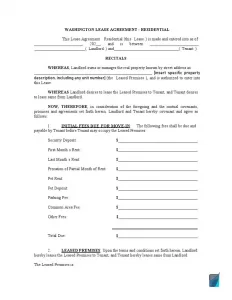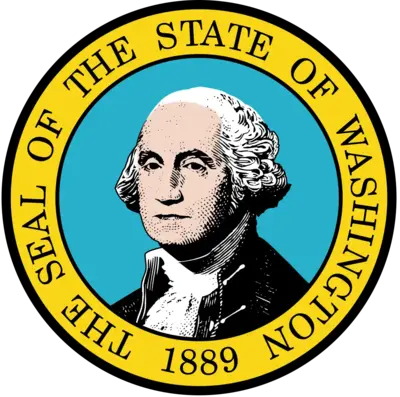Washington Rental Lease Agreement Forms
In the United States (and Washington is not an exemption), a lease agreement, also called a lease agreement, is a document that is needed when two parties conclude a deal tied to real property leasing.
This document fits any type of leasing deal and has various forms. Usually, a lease agreement is a long and detailed contract that contains essential information about the rent, for instance, the price of the deal, main conditions under which the deal is conducted, the leased place description, both parties’ details, and many other features.
There are normally two parties in a lease agreement. One party transmits a piece of real estate for a certain period, and another party gets that piece. The first-mentioned party is called the landlord (or the owner), and the second party is the tenant (or the renter).
A rental agreement protects both sides of the deal in case of any uncertainties. To create a relevant lease contract in Washington, use our form building software to download the template.

Build Your Document
Answer a few simple questions to make your document in minutes
Save and Print
Save progress and finish on any device, download and print anytime
Sign and Use
Your valid, lawyer-approved document is ready
Washington Laws and Lease Requirements
Every state in America suggests its legal requirements regarding lease and lease agreements. Laws that cover lease terms in Washington are found in Title 59 of the Revised Code of Washington. This Title is called “Landlord and Tenant” and is dedicated to leasing deal parties’ relations.
Rules of Security Deposit
Regarding the maximum sum of a security deposit, no rule in Washington obliges an owner to ask for a certain amount.
The renter should receive the deposited amount within 21 days of vacating the rented place according to section 59.18.280 of the Code.
Landlord’s Access
The rules by which a landlord may or may not access the rented premises are described in Section 59.18.150 of the Code.
As written in this Section, the landlord may get to the premises at any moment if an emergency occurs.
In other cases, the landlord has to give the renter a two-day notice if there is a need for maintenance or reconstruction. If the landlord wants to show the premises to a potential tenant or buyer, they should issue the tenant with a one-day notice.
Needed Disclosures
When a lease agreement is signed, both parties also have to accept various disclosures that reveal additional information to the contract. In Washington, there is a list of required disclosures:
- Lead-based paint disclosure. This disclosure is required if the rented premises were built before 1978. It reveals the possibility of having hazardous lead traces in used paint.
- Nonrefundable fees disclosure. In case the owner keeps any tenant’s money after the end of the tenancy, they should clarify the reasons, and such money should be called “nonrefundable.”
- Mold disclosure. A landlord has to provide the tenant with instructions on how to prevent the appearance and growth of the mold in the premises. These instructions should also include information about the dangerous consequences of mold.
- Landlord or agent identification disclosure. A renter should know who is allowed to enter the rented place from the side of the landlord. Details about the landlord or the agent should be provided.
- Fire protection and evacuation disclosure. This disclosure is required for buildings with many units; it is not mandatory for homes where only one family lives. It contains an evacuation plan for the whole building and other important details for emergency cases. A description of places where renters can smoke is also available in this disclosure.
- Security deposit receipt. When a renter transfers a security deposit in Washington, the landlord has to give a receipt that shows where the money is stored.
- Move-in checklist. If a security deposit transfer occurs, the owner must provide the tenant with a checklist of items in the property. Without this checklist, a tenant has the full right to get his or her money back.
Common Rental Agreement Types in Washington
You may lease various types of real estate in the United States. Every deal related to a lease requires a relevant lease agreement. In Washington, there are nine common types of agreement:
- Standard residential rental agreement
- Commercial rental agreement
- Month-to-month rental agreement
- The agreement of sublease
- Lease with an option to buy the leased premises
- Room lease (or roommate) agreement
- Letter of lease termination.
Every deal related to leasing the real property requires the correct lease agreement. Before you sign the document, double-check the template you are using.
Washington Rental Lease Agreement Form Details
| Document Name | Washington Rental Lease Agreement Form |
| Other Names | WA Rental Lease, Washington Residential Lease Agreement |
| Relevant Laws | Washington Revised Code, Title 59 |
| Security Deposit Amount | No limit |
| Security Deposit Return | Twenty-one (21) days from vacation of tenant |
| Avg. Time to Fill Out | 18 minutes |
| # of Fillable Fields | 119 |
| Available Formats | Adobe PDF |


Take a look at some other Washington forms downloaded by FormsPal users. Try our powerful builder to personalize any of these forms to your requirements.
Other Rental Lease Agreement Forms by State
